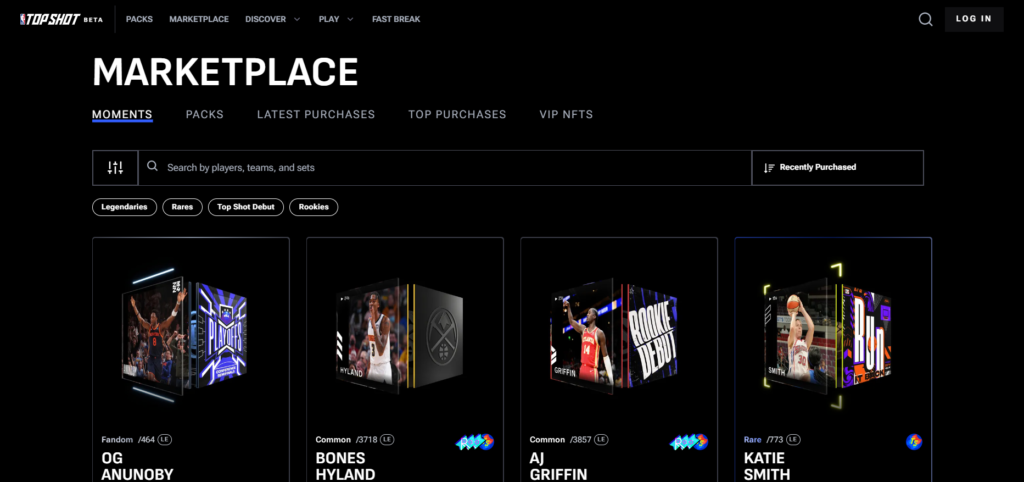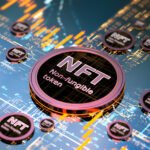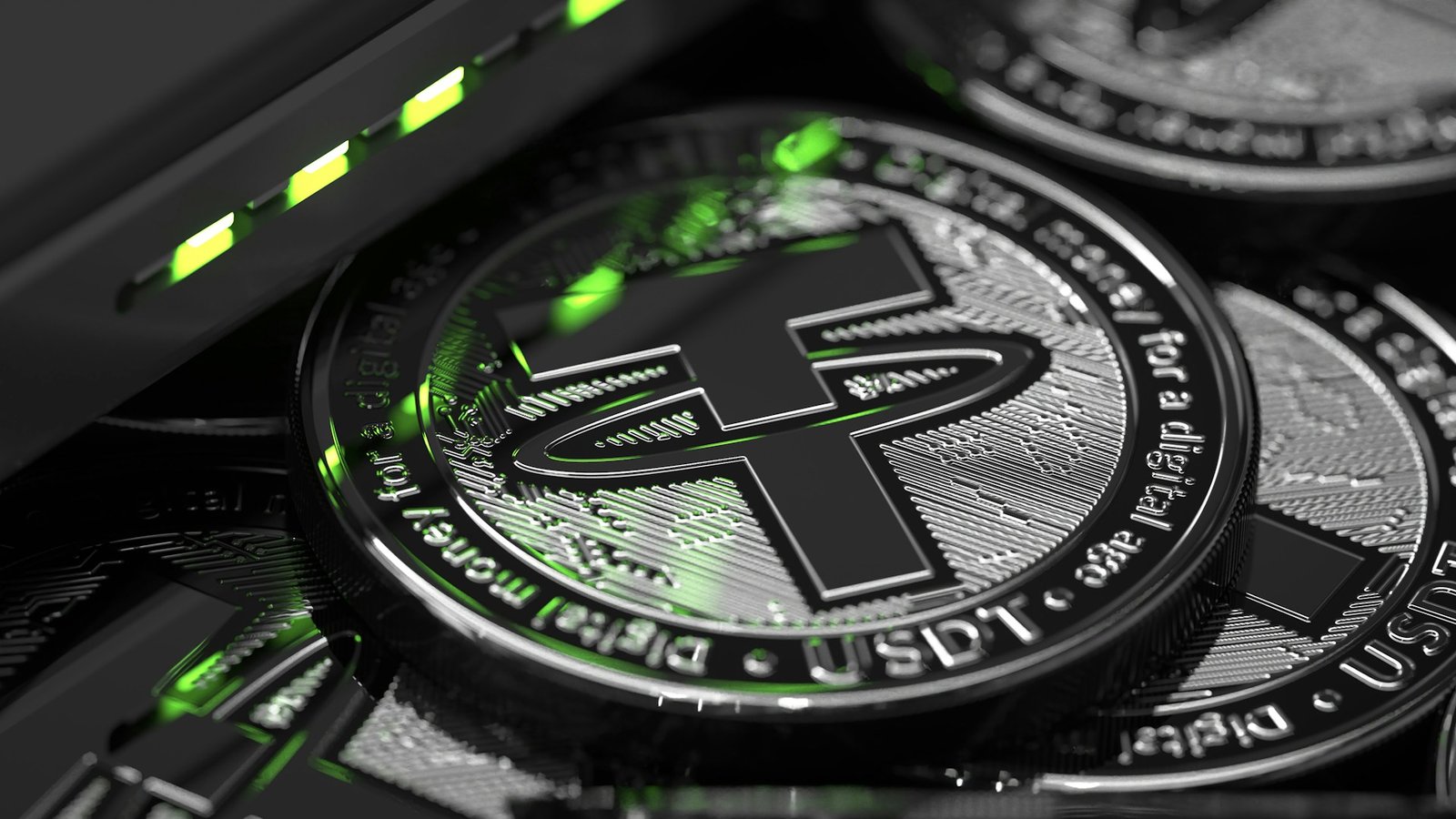Non-Fungible Tokens (NFTs) have revolutionized the way we perceive ownership in the digital age. These unique digital assets have gained massive popularity, offering a new frontier for artists, collectors, and investors alike. But what exactly makes certain NFTs stand out in this crowded space? In this article, we’ll dive into the world of NFTs, explore the most popular ones, and uncover the factors that contribute to their success.
What Are NFTs?
Definition of NFTs (Non-Fungible Tokens)
NFTs, or Non-Fungible Tokens, are unique digital assets that exist on a blockchain, representing ownership of a specific item or piece of content. Unlike traditional cryptocurrencies such as Bitcoin or Ethereum, which are fungible and can be exchanged on a one-to-one basis, NFTs are non-fungible, meaning each token is distinct and cannot be replaced by another. This uniqueness allows NFTs to represent digital items like artwork, music, videos, and even virtual real estate, making them highly valuable in the digital marketplace.
The term “non-fungible” simply means that each token has its own distinct value and properties, differentiating it from other tokens. For example, while one Bitcoin is the same as any other Bitcoin, each NFT is unique and cannot be exchanged on a like-for-like basis with another NFT.
How NFTs Work (Blockchain Technology, Ownership, etc.)
NFTs operate on blockchain technology, the same underlying technology that powers cryptocurrencies. A blockchain is a decentralized digital ledger that records all transactions across a network of computers. When an NFT is created (or “minted”), it is stored on the blockchain, along with all relevant information about the asset, such as its creator, ownership history, and any associated metadata.
The blockchain’s decentralized nature ensures that the ownership and authenticity of the NFT can be verified by anyone. This transparency is a key feature of NFTs, as it allows buyers and collectors to confirm the provenance and originality of a digital asset.
When someone purchases an NFT, they are buying a token that serves as a digital certificate of ownership. This token is linked to the digital asset it represents, whether it’s a piece of digital art, a video clip, or a virtual item in a game. The ownership of the NFT is recorded on the blockchain, and the token is transferred to the buyer’s digital wallet. The buyer then has the right to sell, trade, or hold the NFT as they see fit.
- Sponsored -

An important aspect of NFTs is the concept of “smart contracts,” which are self-executing contracts with the terms of the agreement directly written into the code. These contracts can be programmed to automatically enforce certain rules, such as paying royalties to the original creator whenever the NFT is resold. This feature has made NFTs particularly attractive to artists and creators, as it allows them to continue earning revenue from their work even after the initial sale.
The Difference Between Fungible and Non-Fungible Tokens
To fully understand NFTs, it’s essential to distinguish between fungible and non-fungible tokens.
Fungible Tokens:
Fungible tokens are interchangeable and identical to each other in value. For instance, one Bitcoin is equal to any other Bitcoin, and they can be exchanged without any loss or gain of value. This fungibility makes such tokens ideal for use as a currency, where uniformity is crucial.
Non-Fungible Tokens:
In contrast, non-fungible tokens are unique and have distinct characteristics that differentiate them from one another. Each NFT has its own value based on its uniqueness, rarity, and the specific digital asset it represents. This non-fungibility is what allows NFTs to be used as proof of ownership for unique digital items, much like how a physical deed proves ownership of real estate.
For example, consider a digital artwork. If it is tokenized as an NFT, there is only one original version of that artwork, and the NFT associated with it represents ownership of that original piece. While copies of the artwork can be made, only the NFT holder can claim ownership of the original, making the NFT both valuable and irreplaceable.
In summary, the primary difference between fungible and non-fungible tokens lies in their interchangeability. Fungible tokens are uniform and can be traded equally, while non-fungible tokens are unique and cannot be substituted with another, making them ideal for representing ownership of one-of-a-kind digital assets.
The Surge in NFT Popularity
Historical Context: The Evolution of NFTs
The concept of Non-Fungible Tokens (NFTs) is rooted in the broader development of blockchain technology and digital assets. NFTs first emerged in the mid-2010s, with the introduction of blockchain platforms like Ethereum, which allowed for the creation of smart contracts and decentralized applications (dApps). These technological advancements provided the foundation for the creation and ownership of unique digital assets, leading to the birth of NFTs.
One of the earliest instances of NFTs can be traced back to 2014 with the creation of “Quantum,” a digital artwork by Kevin McCoy and Anil Dash. This was the first known NFT, although the term “NFT” wasn’t widely used at the time. The concept began gaining traction in 2017 with the launch of projects like CryptoPunks by Larva Labs and CryptoKitties by Dapper Labs. These projects introduced the idea of collectible digital assets that could be owned, traded, and verified on the blockchain, laying the groundwork for the NFT market we see today.
The evolution of NFTs has been closely tied to the development of the Ethereum blockchain, which remains the most popular platform for creating and trading NFTs. As blockchain technology advanced and became more accessible, so too did the possibilities for NFTs, leading to an explosion of interest and innovation in this space.

Factors Contributing to the Rise in Popularity
Several key factors have contributed to the meteoric rise in NFT popularity, transforming them from a niche digital curiosity into a mainstream cultural phenomenon.
- Celebrity Endorsements
The involvement of celebrities and influencers has played a significant role in popularizing NFTs. High-profile figures like Elon Musk, Grimes, Snoop Dogg, and Paris Hilton have not only created and sold their own NFTs but have also publicly endorsed the concept. These endorsements have drawn massive attention to the NFT market, attracting both fans and investors. Additionally, musicians, athletes, and artists have found new revenue streams through NFTs, further legitimizing and popularizing the technology. - The Digital Art Boom
NFTs have revolutionized the art world by providing a new way for digital artists to monetize their work. Previously, digital art was difficult to sell due to its easily replicable nature. However, NFTs allow artists to create verifiable, one-of-a-kind digital works that can be bought and sold like physical art. This has led to a digital art boom, with many artists finding success and recognition in the NFT space. The sale of Beeple’s “Everydays: The First 5000 Days” for $69 million at Christie’s auction house in 2021 is a prime example of how NFTs have catapulted digital art into the mainstream. - Blockchain Technology and Decentralization
The underlying blockchain technology that powers NFTs offers transparency, security, and decentralization, which have been crucial to their adoption. The ability to verify ownership and authenticity on a decentralized ledger has made NFTs an attractive proposition for collectors and investors. This technology has also enabled creators to retain control over their work, as smart contracts can automatically enforce royalty payments on secondary sales. - Growing Interest in Digital Collectibles
The rise of digital collectibles has been another significant driver of NFT popularity. Projects like CryptoPunks and CryptoKitties introduced the concept of digital collectibles that could be owned and traded just like physical items. This concept has since expanded into various other domains, including sports, where platforms like NBA Top Shot allow fans to collect and trade officially licensed digital highlights. The scarcity and uniqueness of these digital items have made them highly desirable, fueling the growth of the NFT market. - The Intersection of Gaming and NFTs
NFTs have found a natural fit in the gaming industry, where they are used to represent in-game assets like characters, weapons, and skins. Games like Axie Infinity have pioneered the play-to-earn model, where players can earn cryptocurrency by participating in the game. This has created new economic opportunities for gamers and has driven the popularity of NFTs within the gaming community.
Examples of Early Popular NFTs
- CryptoPunks (2017)
CryptoPunks are one of the earliest and most iconic NFT projects. Created by Larva Labs in 2017, CryptoPunks consist of 10,000 unique 24×24 pixel art characters, each with its own distinct attributes. Originally given away for free, CryptoPunks have since become highly valuable, with some selling for millions of dollars. Their historical significance and rarity have made them a cornerstone of the NFT market. - CryptoKitties (2017)
Launched by Dapper Labs in late 2017, CryptoKitties was one of the first blockchain-based games to gain widespread attention. The game allows players to collect, breed, and trade virtual cats, each represented as an NFT on the Ethereum blockchain. At its peak, CryptoKitties became so popular that it congested the Ethereum network, highlighting the potential and scalability challenges of NFTs. - Decentraland (2017)
Decentraland is a virtual world where users can purchase, develop, and trade virtual real estate, represented as NFTs on the Ethereum blockchain. Launched in 2017, Decentraland offers a glimpse into the future of virtual reality and the metaverse, where digital assets like land, buildings, and even experiences can be owned and monetized. This platform has become a hub for NFT-based experiences, attracting both developers and investors. - Rare Pepe (2016-2018)
Rare Pepes are digital trading cards featuring the popular “Pepe the Frog” meme, created by various artists and issued on the Bitcoin-based Counterparty platform. Although not as well-known as some Ethereum-based NFTs, Rare Pepes are considered a significant part of NFT history, representing one of the earliest examples of digital collectibles on the blockchain.
These early projects set the stage for the explosive growth of the NFT market in the years that followed, demonstrating the potential of digital ownership and the vast possibilities of blockchain technology.
Exploring the Most Popular NFTs
NFTs have taken the digital world by storm, creating a new paradigm for ownership, creativity, and commerce. Among the vast array of NFTs available today, some have risen to prominence due to their uniqueness, cultural impact, and community engagement. This section delves into the most popular NFTs, examining what sets them apart and why they have captured the attention of collectors, artists, and investors.
1. CryptoPunks

Overview
CryptoPunks are one of the earliest and most iconic NFT projects, launched by Larva Labs in 2017. The collection consists of 10,000 uniquely generated 24×24 pixel art characters, each with its own distinct attributes, such as hairstyles, accessories, and facial expressions. The characters include various types like humans, zombies, apes, and aliens, with the latter being the rarest and most valuable.
Why They Stand Out
CryptoPunks hold a special place in NFT history as one of the first NFT projects ever created. Their rarity and historical significance have made them highly sought after, with some Punks selling for millions of dollars. CryptoPunks are also seen as a status symbol within the NFT community, often associated with early adopters of blockchain technology. The limited supply and unique characteristics of each Punk contribute to their enduring popularity and value.
2. Bored Ape Yacht Club (BAYC)

Overview
The Bored Ape Yacht Club (BAYC) is another hugely popular NFT collection that has made waves in the digital art and cryptocurrency communities. Launched by Yuga Labs in April 2021, BAYC consists of 10,000 unique cartoon apes, each with different traits and characteristics. BAYC NFTs are not just digital art pieces; they also serve as membership cards for an exclusive club, offering owners various perks and benefits.
Why They Stand Out
BAYC stands out due to its strong sense of community and the exclusive access it provides to its members. Owners of Bored Apes are granted entry to members-only areas such as the Bathroom (a collaborative digital space) and special events, including real-world parties and gatherings. The project’s success has been further bolstered by endorsements from celebrities and influencers like Steph Curry, Jimmy Fallon, and Eminem, who have purchased and publicly showcased their Bored Apes. The combination of unique digital art, community engagement, and celebrity involvement has propelled BAYC to the forefront of the NFT market.
3. Art Blocks

Overview
Art Blocks is a platform that has revolutionized digital art through generative artwork. Launched in 2020, Art Blocks allows artists to create algorithmically generated art pieces that are then minted as NFTs on the Ethereum blockchain. Each piece of Art Blocks is unique, with its design determined by the artist’s code and the blockchain’s randomness. The platform hosts a wide range of projects, from simple geometric patterns to complex and intricate designs.
Why They Stand Out
Art Blocks is celebrated for its innovation in merging technology and art. The generative nature of the artwork ensures that each piece is one-of-a-kind, appealing to collectors who value both the creativity of the artist and the uniqueness of the final product. Art Blocks has attracted a loyal following of digital art enthusiasts and collectors, and some of its collections, such as “Chromie Squiggle” and “Fidenza,” have become highly prized in the NFT art world. The platform’s focus on quality and originality has cemented its place as a leading force in the digital art space.
4. NBA Top Shot

Overview
NBA Top Shot is a blockchain-based platform that allows users to buy, sell, and trade officially licensed NBA highlight videos, known as “Moments.” Launched by Dapper Labs in 2020, the platform quickly gained popularity among sports fans and collectors. Each Moment is an NFT that represents a specific play or highlight from an NBA game, with varying degrees of rarity.
Why They Stand Out
NBA Top Shot has successfully combined the excitement of sports with the appeal of digital collectibles. By tokenizing memorable basketball moments, Top Shot has created a new form of sports memorabilia that resonates with fans. The platform’s use of blockchain technology ensures the authenticity and scarcity of each Moment, adding to their value. The ease of use, combined with the strong emotional connection fans have with their favorite teams and players, has made NBA Top Shot one of the most successful NFT projects to date.
5. Axie Infinity

Overview
Axie Infinity is a blockchain-based game that has pioneered the play-to-earn model, where players can earn cryptocurrency by participating in the game’s ecosystem. Launched by Sky Mavis in 2018, Axie Infinity revolves around digital pets called Axies, which players can breed, battle, and trade. Each Axie is an NFT with unique attributes, making some more valuable than others.
Why They Stand Out
Axie Infinity stands out due to its innovative gameplay and the economic opportunities it offers to players. The game’s play-to-earn model has allowed players, particularly in developing countries, to earn a living by playing the game. This has led to the creation of a thriving in-game economy where players can buy, sell, and trade Axies, land, and other in-game assets. Axie Infinity’s success has demonstrated the potential of NFTs in gaming, where virtual assets can have real-world value. The game’s community-driven economy and the financial empowerment it offers its players have made it one of the most popular and influential NFT projects in the world.
These popular NFTs—CryptoPunks, Bored Ape Yacht Club, Art Blocks, NBA Top Shot, and Axie Infinity—are more than just digital assets; they represent the convergence of art, technology, community, and commerce. Each of these projects has carved out a unique niche in the NFT space, attracting a diverse audience of collectors, investors, and enthusiasts. As NFTs continue to evolve and gain mainstream acceptance, these pioneering projects will likely remain at the forefront of this digital revolution.
Key Factors That Make NFTs Stand Out
Non-Fungible Tokens (NFTs) have become a central part of the digital economy, with their value and appeal often tied to several key factors. Understanding these factors is essential to comprehending why certain NFTs rise in popularity and maintain high value over time. Below, we explore the primary factors that make NFTs stand out in the marketplace.
A. Rarity and Scarcity
Rarity
Rarity is one of the most critical aspects that contribute to the value of an NFT. In the world of digital assets, rarity refers to the uniqueness of a token, often determined by its attributes, the number of editions produced, or its historical significance. For instance, within a collection like CryptoPunks or Bored Ape Yacht Club (BAYC), certain traits or characteristics may be rarer than others. An NFT with a rare trait—such as a specific accessory, background color, or character type—often commands a higher price due to its scarcity.
Scarcity
Scarcity is closely related to rarity but focuses more on the limited supply of a particular NFT or collection. The concept of scarcity is ingrained in many NFT projects, where a fixed number of tokens are created and no more can be minted. This limited supply creates a sense of exclusivity, driving demand and increasing the value of the NFTs. Collectors are often drawn to NFTs that are part of a limited series or those that are unique, as owning such an item gives them something that few others can possess. The scarcity of NFTs can also be artificially created through mechanisms like “burning” tokens (permanently removing them from circulation), further enhancing their rarity and value.
B. Utility and Functionality
Utility
Beyond their aesthetic appeal or collectible nature, NFTs can also offer utility, adding an extra layer of value for the owner. Utility refers to the practical benefits or functionalities that an NFT provides. For example, some NFTs grant access to exclusive online communities, virtual events, or special content. In the case of gaming NFTs, utility might include in-game benefits, such as unique characters, weapons, or skins that enhance the gaming experience. These added functionalities make NFTs more attractive to buyers, as they offer tangible benefits beyond mere ownership.
Functionality
Functionality in NFTs can also extend to how they interact with other digital assets or platforms. For instance, NFTs can be integrated into decentralized finance (DeFi) protocols, used as collateral for loans, or even fractionalized, allowing multiple owners to share a single NFT. The ability to use NFTs across different platforms or applications increases their appeal, as it provides owners with more opportunities to leverage their assets. Projects that emphasize the functional aspects of their NFTs often see higher engagement and long-term value, as they offer more than just digital art or collectibles.
C. Community and Exclusivity
Community
The community aspect of NFTs is a powerful factor in their success. Many successful NFT projects have built strong, engaged communities around them, where members feel a sense of belonging and shared purpose. These communities often communicate through social media platforms, Discord servers, or forums, where they share insights, celebrate milestones, and discuss the future of their favorite projects. A strong community can drive the popularity and value of an NFT, as members are often passionate advocates who help promote and sustain the project.
Exclusivity
Exclusivity is another key factor that attracts buyers to NFTs. Many NFT projects offer exclusive perks to their holders, such as early access to new drops, invitations to private events, or membership in elite groups. For example, the Bored Ape Yacht Club (BAYC) offers its members access to exclusive virtual spaces, real-world events, and additional NFTs. This sense of exclusivity creates a strong desire among collectors to be part of something special and unique, further increasing the demand and value of the NFTs.
D. Cultural Relevance and Endorsements
Cultural Relevance
Cultural relevance plays a significant role in the popularity of NFTs. NFTs that tap into current trends, memes, or cultural phenomena often resonate more with the public, making them more desirable. For instance, NFTs related to popular culture, such as sports, music, or iconic moments in history, tend to attract a broader audience. These NFTs often serve as digital representations of cultural moments, allowing people to own a piece of history or a representation of something they feel passionate about. The connection to broader cultural themes makes these NFTs particularly valuable, as they hold meaning beyond their digital form.
Endorsements
Celebrity endorsements and collaborations have also significantly boosted the popularity of certain NFTs. When a well-known figure or brand becomes associated with an NFT project, it often attracts widespread attention, bringing in new audiences who may not have been previously interested in NFTs. Celebrities like Snoop Dogg, Grimes, and Paris Hilton have created or endorsed NFTs, adding to their appeal and driving up their value. These endorsements lend credibility to NFT projects and can lead to increased visibility and sales.
The factors of rarity, utility, community, and cultural relevance all play crucial roles in making NFTs stand out in the competitive digital marketplace. Whether it’s the uniqueness of a digital asset, the benefits it offers, the community it fosters, or its connection to broader cultural trends, these elements combine to create NFTs that are not only valuable but also resonate deeply with their owners. As the NFT space continues to evolve, understanding these key factors will be essential for anyone looking to navigate and succeed in this dynamic and rapidly growing market.
The Future of NFTs
The world of Non-Fungible Tokens (NFTs) is rapidly evolving, and their influence across various industries continues to grow. As we look to the future, it’s essential to consider the potential trajectory of the NFT market, the challenges and opportunities that lie ahead, and how NFTs may reshape different sectors.
Predictions for the NFT Market
The NFT market, while still relatively young, has already experienced explosive growth, and this trend is expected to continue in the coming years. Several predictions outline the future trajectory of NFTs:
- Mainstream Adoption
As awareness of NFTs increases, we can expect more mainstream adoption across various sectors. Major brands, celebrities, and companies are likely to continue entering the NFT space, creating new opportunities for digital ownership, marketing, and consumer engagement. This mainstreaming could lead to the integration of NFTs into everyday life, with more people using NFTs for various purposes, from collectibles and art to real estate and identification. - Enhanced Interoperability
Interoperability, the ability of different blockchain networks to work together, is expected to improve, making it easier for NFTs to be transferred, traded, and utilized across multiple platforms and ecosystems. This development will likely lead to a more seamless and user-friendly experience, encouraging broader participation in the NFT market. - Growth in Virtual Worlds and the Metaverse
NFTs are poised to play a crucial role in the development of virtual worlds and the metaverse—a collective virtual shared space that integrates augmented reality (AR), virtual reality (VR), and blockchain. In these digital environments, NFTs could represent anything from virtual land and property to digital fashion and identity, making them a foundational element of the metaverse economy. - Tokenization of Physical Assets
The tokenization of physical assets is another emerging trend in the NFT space. In the future, we may see a rise in NFTs representing ownership of physical items like real estate, luxury goods, or even intellectual property. This could revolutionize industries by making asset ownership more accessible, transparent, and efficient. - Environmental Sustainability Initiatives
The environmental impact of NFTs, particularly those on energy-intensive blockchains, has been a topic of concern. As the market matures, we can expect to see more initiatives aimed at reducing the carbon footprint of NFTs, such as the adoption of eco-friendly blockchains and carbon offsetting programs. This focus on sustainability could attract more environmentally conscious consumers and creators to the NFT space.
Potential Challenges and Opportunities
While the future of NFTs is promising, it is not without its challenges. However, these challenges also present opportunities for growth and innovation:
- Regulatory Uncertainty
One of the biggest challenges facing the NFT market is the lack of clear regulatory guidelines. Governments around the world are still grappling with how to regulate digital assets, and the legal status of NFTs varies by jurisdiction. This uncertainty could hinder the growth of the market, but it also presents an opportunity for industry leaders to work with regulators to create frameworks that protect consumers while fostering innovation. - Market Volatility
The NFT market has been characterized by significant price volatility, with some NFTs selling for millions one day and losing value the next. This volatility can be a barrier to entry for new participants and a risk for investors. However, as the market matures, we may see the development of more stable and predictable pricing mechanisms, along with better tools for evaluating the long-term value of NFTs. - Scalability Issues
As the demand for NFTs grows, so too does the strain on blockchain networks, particularly those like Ethereum, which is currently the most popular platform for NFTs. Scalability issues, including high transaction fees and slow processing times, could impede the market’s growth. Nonetheless, advancements in blockchain technology, such as Ethereum’s transition to Ethereum 2.0 and the development of Layer 2 solutions, offer opportunities to overcome these challenges and support the continued expansion of the NFT market. - Intellectual Property and Copyright Concerns
The question of intellectual property (IP) rights in the NFT space is complex. Issues such as copyright infringement, unauthorized reproduction of digital content, and the legal status of derivative works pose challenges for creators and buyers alike. Addressing these concerns will be crucial for the legitimacy and sustainability of the NFT market, offering an opportunity for legal and technological innovations that protect IP rights while promoting creativity. - Consumer Education and Awareness
The rapid growth of the NFT market has outpaced the general public’s understanding of how NFTs work and their potential benefits and risks. This knowledge gap can lead to misconceptions, fraud, and poor investment decisions. There is a significant opportunity for education and outreach efforts to help consumers make informed decisions and engage with NFTs more effectively.
The Evolving Role of NFTs in Various Industries
NFTs are already making a significant impact across a variety of industries, and their role is expected to evolve further as the technology matures:
- Art and Entertainment
In the art world, NFTs have revolutionized how digital art is created, bought, and sold. Artists now have direct access to a global market, where they can monetize their work and retain royalties on secondary sales. The entertainment industry is also embracing NFTs, with music artists, filmmakers, and even sports franchises using NFTs to create new revenue streams, engage with fans, and offer exclusive content. - Gaming
The gaming industry has been one of the earliest adopters of NFTs, using them to represent in-game assets like characters, skins, and weapons. As the play-to-earn model gains popularity, NFTs are becoming a core component of the gaming economy, allowing players to own, trade, and monetize their digital assets. This trend is likely to continue, with NFTs enabling new forms of gameplay, virtual economies, and player-driven content creation. - Real Estate
The real estate industry is beginning to explore the potential of NFTs to represent ownership of physical and virtual properties. Tokenizing real estate as NFTs could simplify the buying and selling process, reduce transaction costs, and enable fractional ownership, making real estate investment more accessible to a broader audience. - Fashion and Luxury Goods
NFTs are entering the fashion world, where they can represent ownership of digital fashion items, authenticate physical products, and provide exclusive experiences for brand loyalists. Luxury brands are experimenting with NFTs to create digital twins of physical products, offering buyers both a tangible item and a unique digital counterpart. - Education and Certification
NFTs have the potential to transform the education sector by providing verifiable digital certificates for academic achievements, professional qualifications, and skills. These NFTs could be stored on a blockchain, allowing employers and institutions to easily verify a candidate’s credentials. This application of NFTs could streamline the hiring process and reduce the prevalence of fraudulent qualifications.
The future of NFTs is filled with possibilities, from continued growth and mainstream adoption to innovations across multiple industries. While there are challenges to overcome, such as regulatory uncertainty and scalability issues, the opportunities for NFTs to reshape digital ownership, creativity, and commerce are immense. As the market evolves, NFTs are likely to become an integral part of the digital economy, influencing how we interact with technology, culture, and value in the years to come.
Also Read: The Ultimate Guide: How NFT Marketplaces Revolutionize the Art World
Conclusion
The rise of Non-Fungible Tokens (NFTs) has marked a significant shift in how we perceive, create, and trade digital assets. As NFTs continue to gain traction across various industries, their impact on art, entertainment, gaming, real estate, and even education is becoming increasingly evident. These unique digital tokens offer unprecedented opportunities for creators, collectors, and investors, enabling them to participate in a new, decentralized digital economy.
NFTs stand out due to several key factors, including rarity, utility, community engagement, and cultural relevance. These elements contribute to their growing popularity and value, making NFTs more than just digital collectibles—they represent a revolution in ownership, creativity, and commerce.
Looking ahead, the future of NFTs is filled with both challenges and opportunities. While issues such as regulatory uncertainty, market volatility, and scalability need to be addressed, the potential for NFTs to transform industries and redefine digital ownership is immense. As the technology continues to evolve, NFTs are likely to become an integral part of our digital lives, influencing how we interact with content, assets, and each other in the years to come.
In summary, NFTs are not just a passing trend; they are a powerful innovation that is reshaping the digital landscape. Whether you’re an artist, a gamer, an investor, or simply curious about the future of digital assets, understanding the dynamics of the NFT market is essential. As we move forward, NFTs will undoubtedly play a crucial role in the ongoing digital revolution, offering new ways to create, own, and engage with digital content.
FAQs
What exactly is an NFT?
An NFT, or Non-Fungible Token, is a unique digital asset that represents ownership of a specific item or piece of content, such as digital art, music, or even virtual real estate. NFTs are stored on a blockchain, ensuring their authenticity and ownership.
How do NFTs differ from cryptocurrencies like Bitcoin?
While both NFTs and cryptocurrencies like Bitcoin are based on blockchain technology, the key difference is that NFTs are non-fungible, meaning each token is unique and cannot be exchanged on a one-to-one basis with another. In contrast, cryptocurrencies are fungible, meaning each unit is identical and can be traded equally.
Why are some NFTs so expensive?
The value of an NFT often depends on factors such as rarity, uniqueness, utility, and cultural relevance. Limited supply, the involvement of celebrities, and the NFT’s significance within a particular community can drive up prices, making certain NFTs highly valuable.
What are the potential risks of investing in NFTs?
Investing in NFTs carries risks such as market volatility, lack of regulation, and the potential for losing value. Additionally, there are concerns about the environmental impact of blockchain technology and the security of digital wallets used to store NFTs.
How can artists benefit from creating NFTs?
NFTs allow artists to monetize their digital work in new ways by selling unique pieces directly to collectors. They can also earn royalties on future sales through smart contracts, providing ongoing income every time the NFT is resold.
Can NFTs be used for anything other than art?
Yes, NFTs have a wide range of applications beyond art. They are used in gaming to represent in-game assets, in real estate for tokenizing property, in music for selling tracks and albums, and even in the fashion industry for digital clothing and accessories.
What is the environmental impact of NFTs, and how is it being addressed?
The environmental impact of NFTs is primarily due to the energy-intensive process of minting and trading them on certain blockchain networks. However, solutions like transitioning to more eco-friendly blockchains and implementing carbon offset programs are being explored to mitigate this impact.













